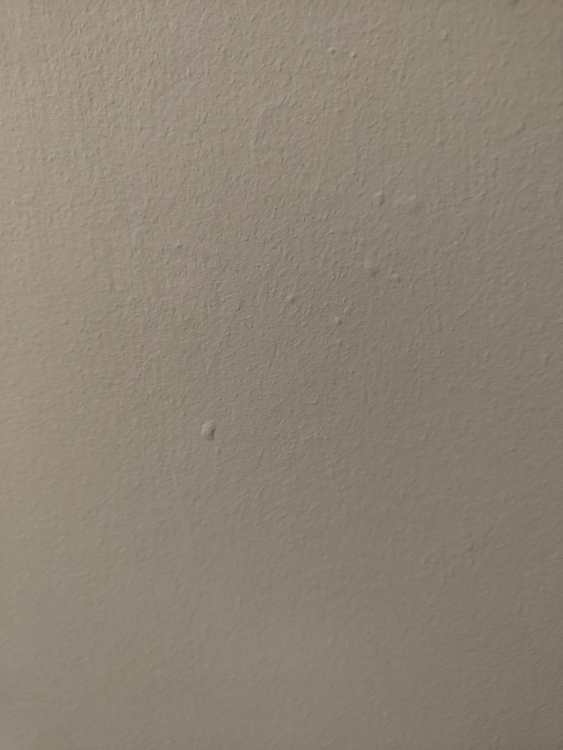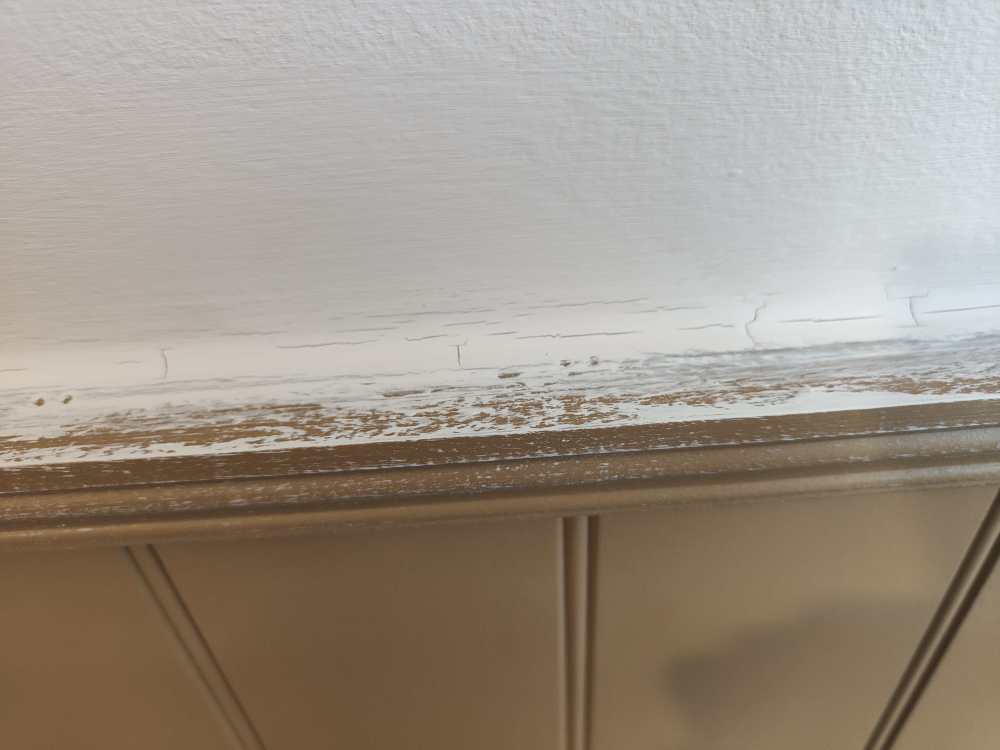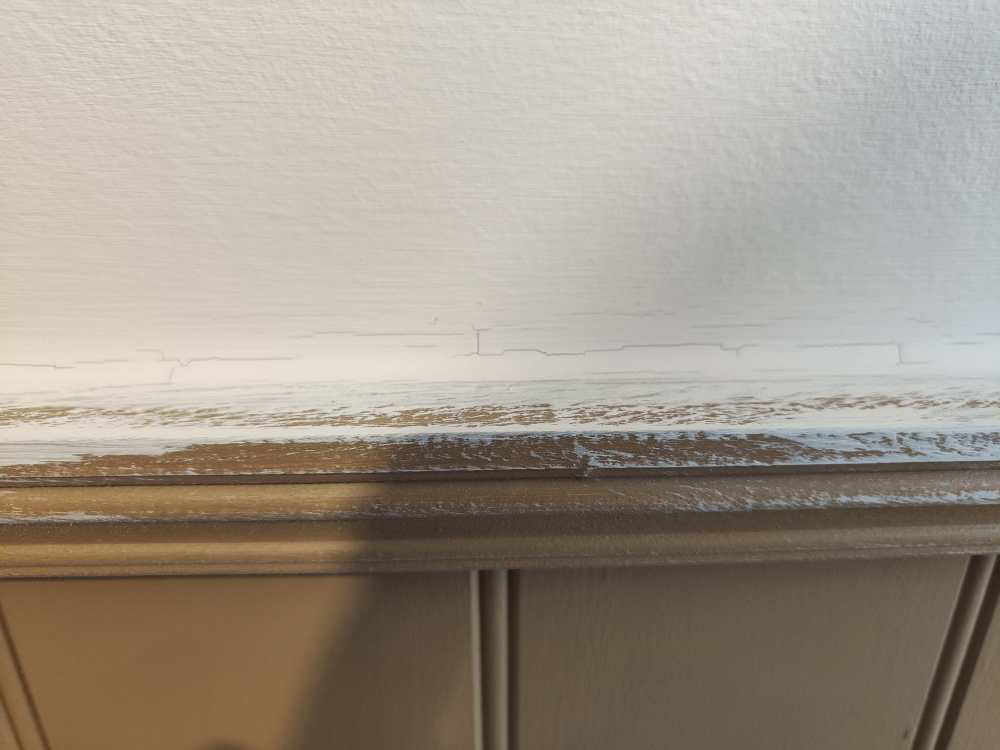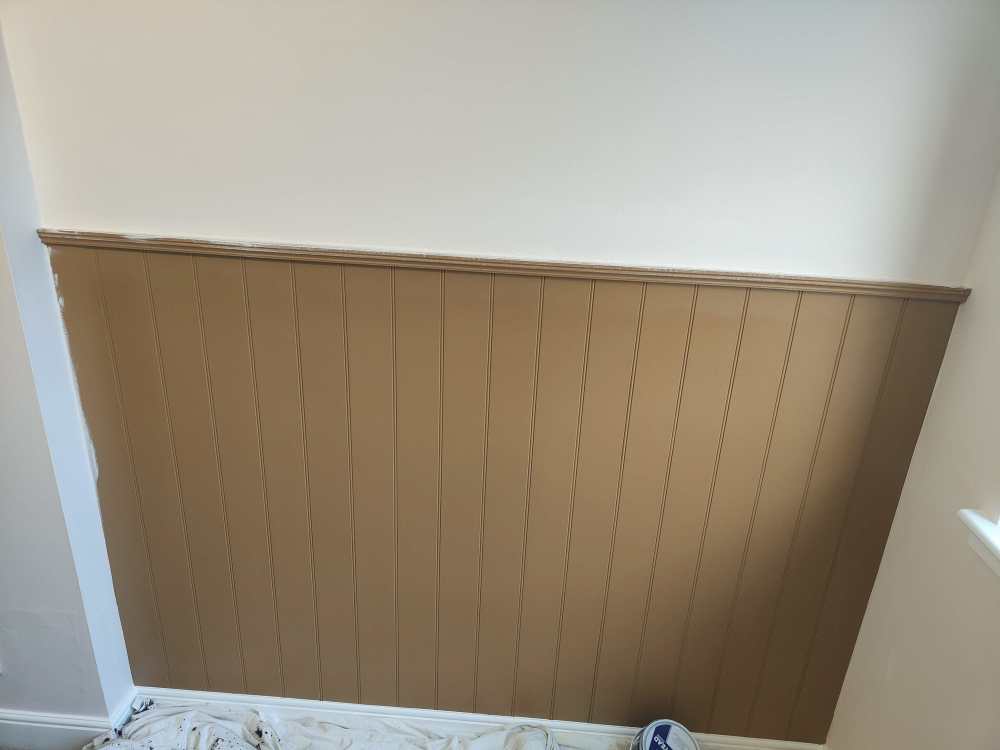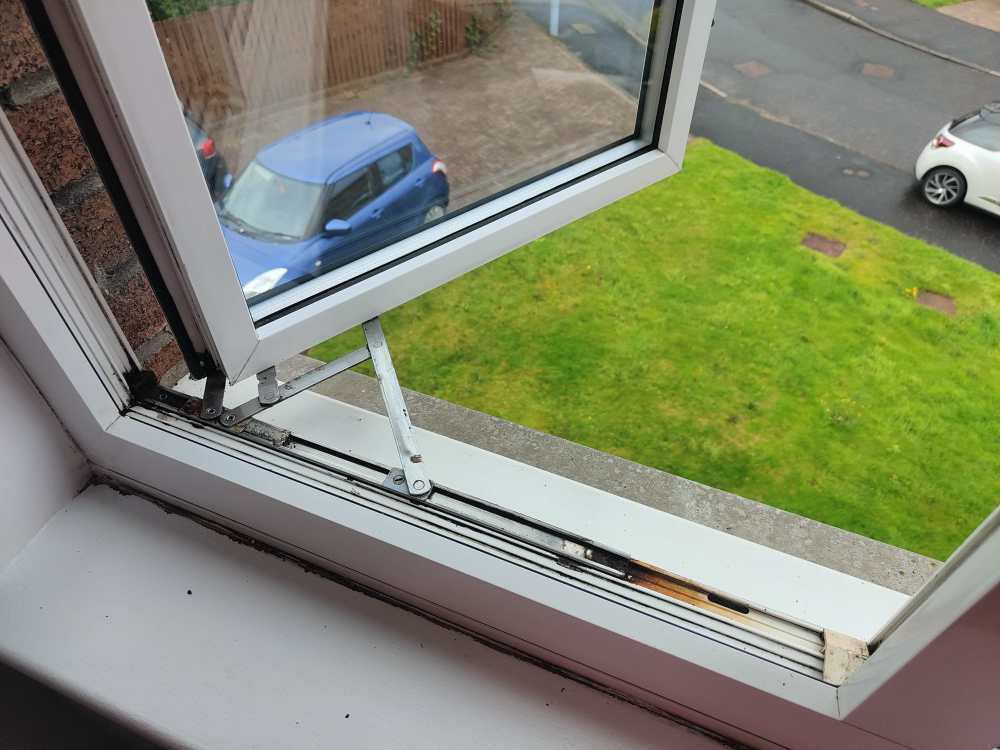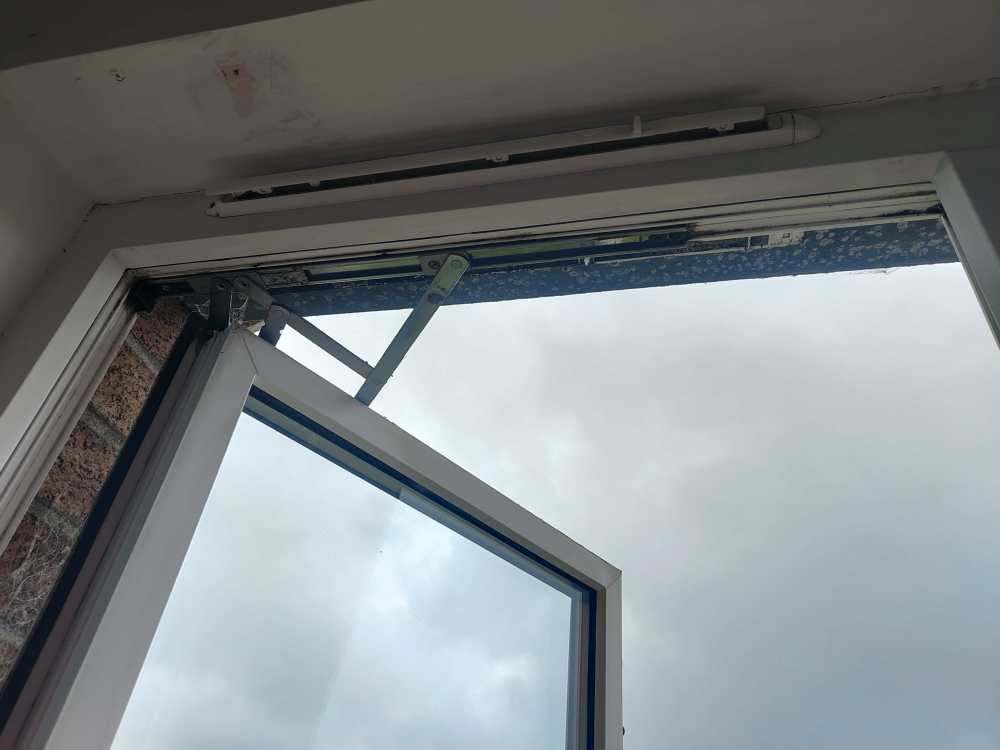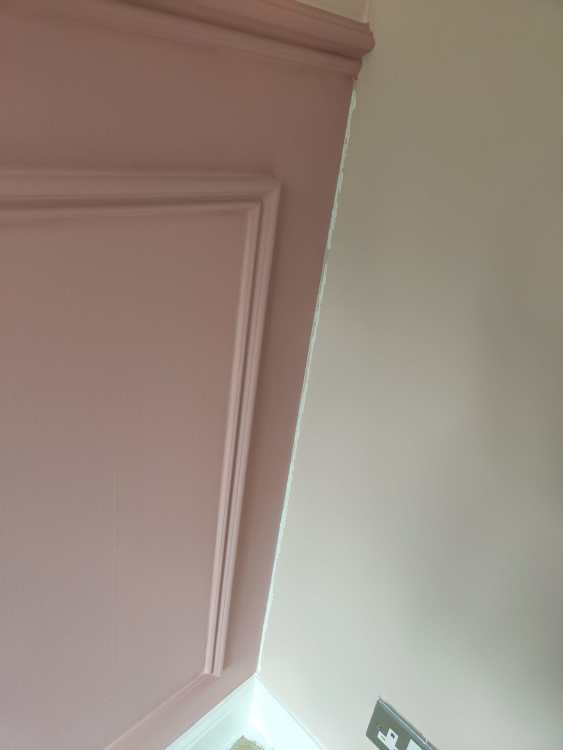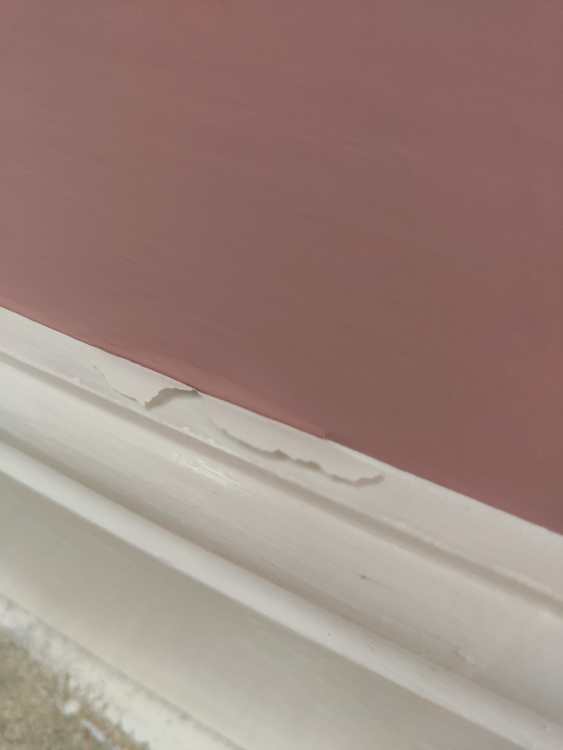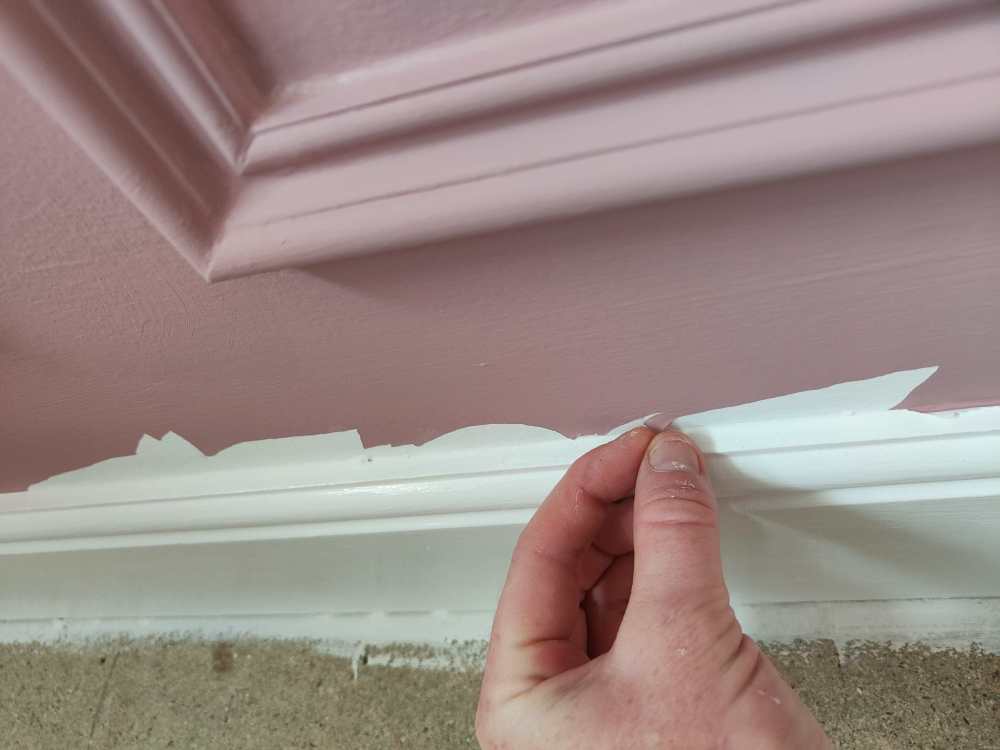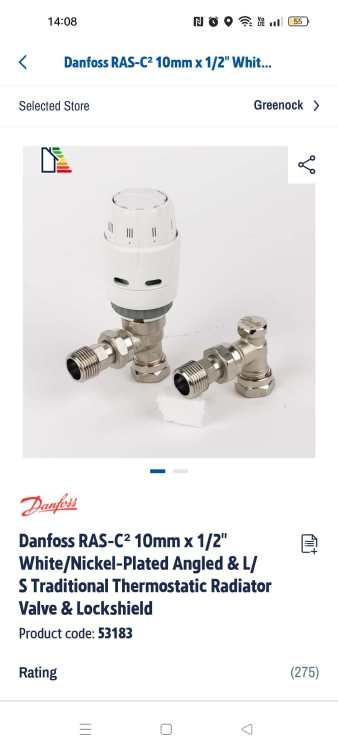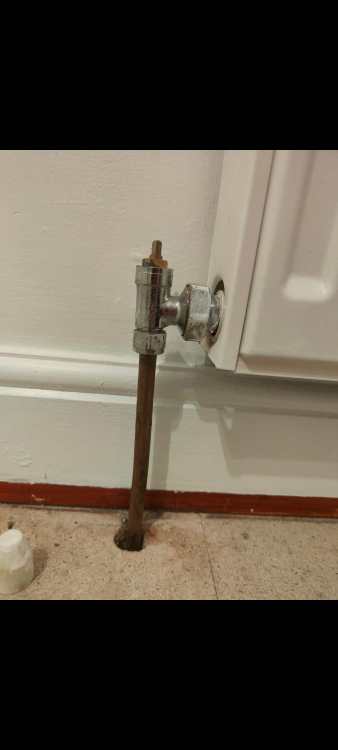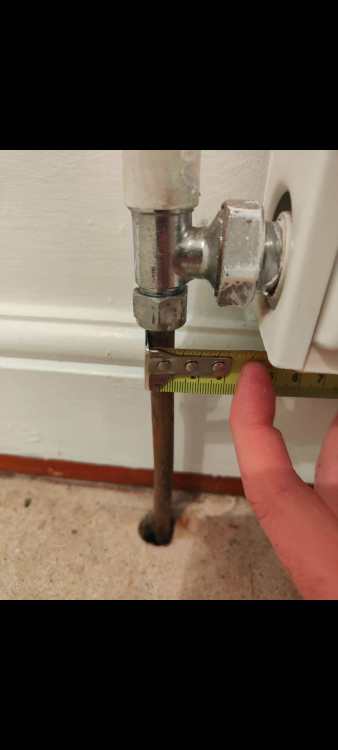
AidanGee93
Members-
Posts
39 -
Joined
-
Last visited
Personal Information
-
Location
Scotland
Recent Profile Visitors
The recent visitors block is disabled and is not being shown to other users.
AidanGee93's Achievements

Member (3/5)
1
Reputation
-
Painters advice: Using a water based paint for my walls, first coat went on lovely but when dry I noticed on most of the walls little air bubbles (some as big as a fifty pence piece). Let it dry and I sanded them down which worked. Upon painting second coat most of them bubbles have reappeared? Id love to know you're thoughts/advice for treating as I'm thinking the walls where never plastered...just plasterboarded and joint taped and Mabey the paints seeping behind the paper on the plasterboard causing bubbles?
-
Hello all, have very little pink paint left and after paneling and caulking I noticed the caulk cracked? Didn't want to take chance with putting the left over pink I have (not a lot at all) to hopefully seal the cracks. So bought a no crack decorative caulk and put a small bead over existing, said can paint within 5 mins but will leave it 24 hours before painting...have I done right thing? Any tips welcome...cheers
-
I'm in Greenock
-
Thanks mate, very handy comment...will check them out, cheers
-
Thankyou mate, appreciate that
-
Thanks mate, I'll get someone to do them definitely if it's just the hinges, reason I asked was I want to finish the room without the need to rip a window out, so I'll be fine to decorate whole room then replace hinges down the line? Do you know the name of the hinges? Other user commented 'click to center hinge'?
-
Hello all Looking for some advice, bedroom window for my future little one due January won't fully close, although it won't be an issue with water coming in (not a weather side window) it will be really drafty in winter. Any tips? See Pictures...it's as if the window closes at the handle side but the opposite side has a massive gap, can clearly see outside through the gap. Is this an easy fix, won't have to replace whole window? Hopefully just new hinges will sort? Any tips Greatly appreciated. (See pics below)...
-
Also mate, thought to say, only think I'm thinking is I gave it a generous doze of decorators caulk...thinking that's what's Mabey pulled? Just weird coz it didn't pull on the skirting with other paint. Anyway if I sanded the patches would it be okay assuming it's some cured caulk? Then filled with zinsser BIn or that primer I got for the pine wood panelling? Like I say above still love to use the frog tape Mabey go for yellow this time round? Hopefully you see this mate, cheers
-
Hi mate thanks for you're reply, do appreciate you! Material is plasterboard onto wooden studs with brick work holding studs. Yes mate I've given the skirting the painting first and went a bit higher onto the walls just coz I wanted to seal the decorators caulk, makes sense what you are saying but it's peeled at the sides and the top too?... definitely didn't satin the sides or top. It's strange coz when I pulled the tape off skirting in rest of the room the tape peeled nothing off and lighter shade pink stayed tact. It honestly feels like if I peel that dark shade pink I could peel lots of it off in one go. Like you say rough it up with sand paper and prime it, I have primer I was suggested to use for the pine panelling could I use that over the damaged parts? Or I have Zinnser BIN? Reckon once sanded and primed (if you still think that's the way) it would still be good to frog tape for that crisp line...heard yellow colour is low tack so could use this? If it makes any difference I pulled the other green frog tape from skirting after wall paint next day so completely dry...worked great, paneling area I pulled only 20 mins after second coat but was fairly dryish
-
Hello People, looking for any advice... Panelled my daughter's room then decorators caulked the gaps aswell as wood filled. I primed the Pine paneling and painted skirting satin brilliant white, then walls with a light shade pink Acrylic based paint. Then taped up panelling area and painted dark pink Acrylic paint again, gave it two coats then 20 mins after last coat pulled it and not to my delight, see pics... Looking for help as carpet needs fitted in 2 days, I could hand paint it tonight no issues but it's the tape that's definitely pulled paint off but would like to use it again or a diff sort...was green frog tape (which worked brilliantly against the white satin and lighter pink walls to skirting... Cheers Aidan
-
Pls see pics... Got 10mm copper flow and return pipes, have standard lockshield valves and want to replace to TRVs. Will the one in pic (Screwfix) work? I see it's 15mm but think it comes with a 10mm reducer for the copper pipe... Also, if I drain my central heating system (as have a few of these to fit while renovating rooms) and don't plan to use central heating can I still shower and run hot water for bath/basin etc? It's a combi boiler and currently on the switch for hot water only, won't switch it to hot water and central heating... Cheers, Aidan.
-
Worth mentioning I would like to use the crawl space loft for storage, nothing delicate would go up there for storage. That's probably another topic tho
-
Cheers for you're tips, I get you now with the foam top/sides/bottom then can plaster it. See the current set up is studs and plasterboard so when I replace it I'll possibly add a slightly thicker stud (room for insulation) and plasterboard as I'm happy with the space even if loose a tiny bit with bigger studs. The ceiling is quite high I thought this too but happy with the height...if get up the small crawl space loft above it and add plenty insulation. Will height of the garage be an issue regarding moisture/mould in future? Regards to sucking air out the house...I understand you're point just don't see how I could do it as the garage is about 2.5m off the gable end of our house, plus that's a path to back garden...also even if was a way it's into the living with closest room? I will keep my eye on the garage door next heavy rain fall but had a rough check and seemed no sign of previous water ingress. Thanks for you're tips I appreciate anyone's input with some knowledge behind them
-
Thanks for input, definitely going to remove all the plasterboard, new studs and insulate so mind made on that one. Just looking for air control tips and appreciate you're comment with the fan. I will put and extractor fan in the loft with ducting leading from ceiling vent to external loft wall...as plan to do a lot of sawing in there in future for things like MDF wardrobes, fances, decking etc...allows me to work if raining which 90% the time it is. I know ventilation is good for getting stale air out and fresh in but just don't want it freezing...seems pointless. Heard 2 vents in opposite walls for a cross air flow, and 2 on top for warm air to escape...open to suggestions
-
Btw, closed cell expanding foam...would it still be needed if when I replace plasterboard I plan to skim it all anyway...so closing where the boards meet with scrim and plaster

